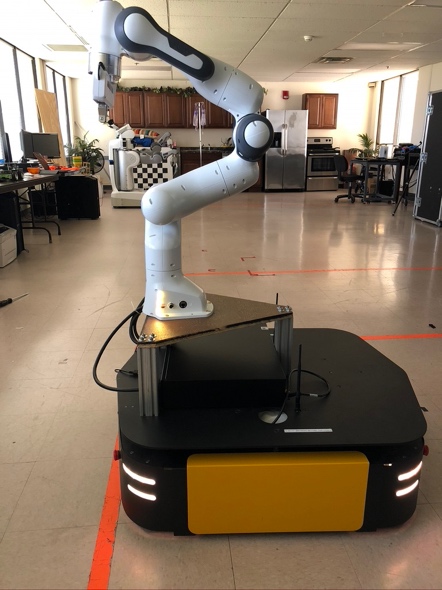MINA: Multitasking Intelligent Nursing Aid robotic system
Abstract
Nurses play vital roles in healthcare and make up the largest section of health professions. Registered
Nurses
(RNs) provide and coordinate patient care and educate patients and the public about health conditions.
In
the
U.S., there are more than 3.8 million RNs nationwide. The US Bureau of Labor Statistics projects that
employment
of RNs is estimated to grow 12% from 2018-2028.
We envision the future of work for RNs to be enhanced by a Multitasking Intelligent Nurse Aid (MINA)
robotic
system. Our goal is to use MINA to augment RNs by performing non-critical tasks such as fetching and
carrying
supplies, or taking contactless vital signs, and providing information, communication, confidence and
as-needed
help.
Through our initial interviews with nurses, we have identified several tasks of high importance. We are
currently focusing our efforts on two tasks:
- Fetching supplies, objects, food, and water for patients' room and carrying supplies necessary for nurse's work.
- helping patients walk by carrying Intravenous therapy (IV) and monitoring various gait/walking parameters.

Research Team

Prof. Fillia Makedon(PI) |

Dr. Nicholas Gans(Co-PI) |

Dr. Muthu Wijesundara(Co-PI) |

Dr. Deborah F Behan(Co-PI) |

Dr. George Simens(Co-PI) |

Dr. Donald Hicks(Co-PI) |

Dr. Matthew Brown(Co-PI) |

Dr. Maria Kyrarini(SP) |
|

Akilesh RajavenkatanarayananPh.D. Student - UTA |

Harish Ram NambiappanPh.D. Student - UTA |

Jackson LilerPh.D. Student - UTA |

Mohammadreza DavoodiResearch Scientist III - UTARI |

Cody LundbergResearch Engineer II - UTARI |

Michael AraujoResearch Scientist II - UTARI |